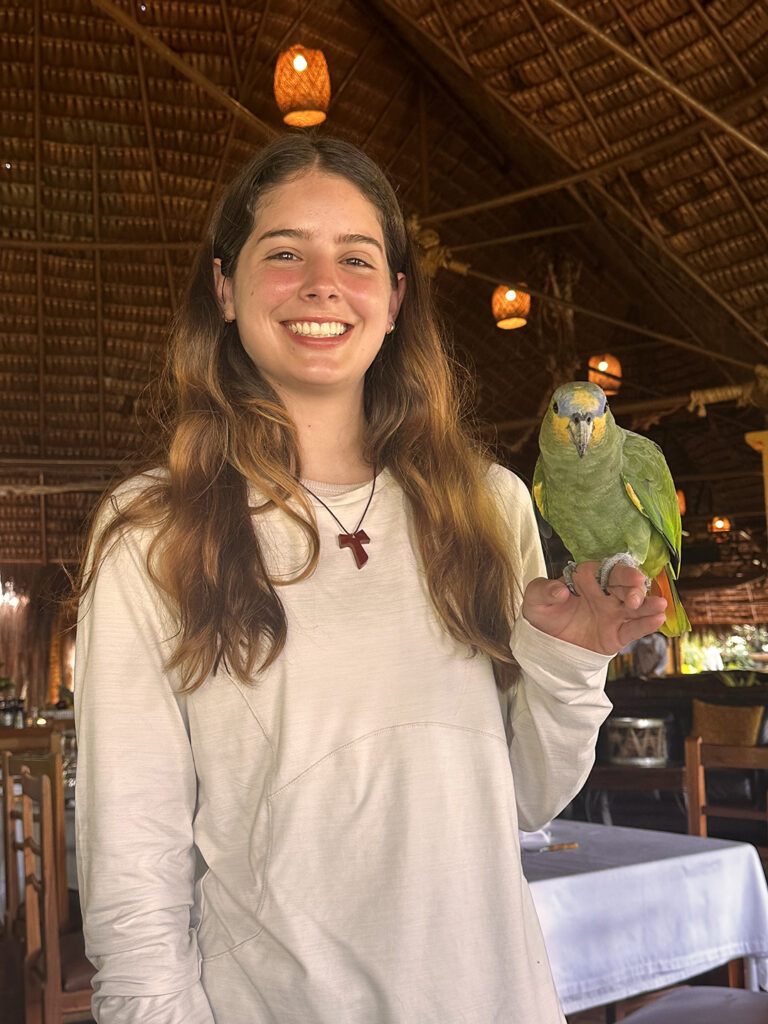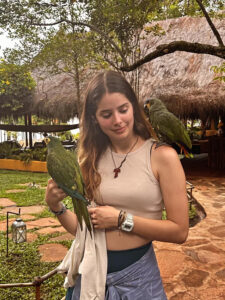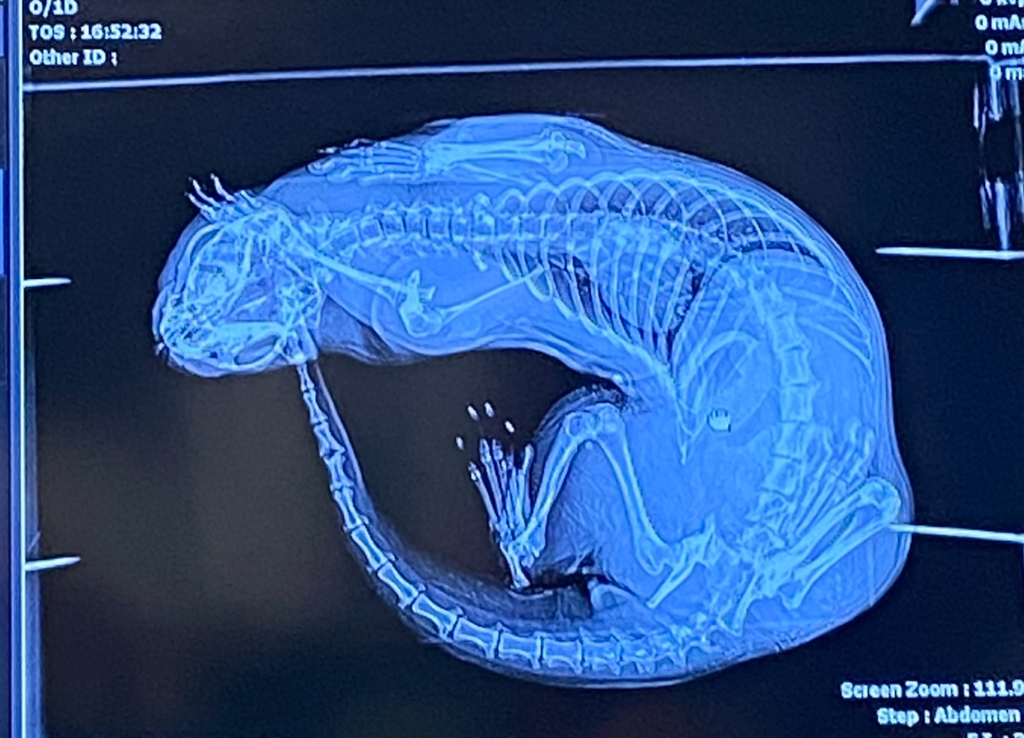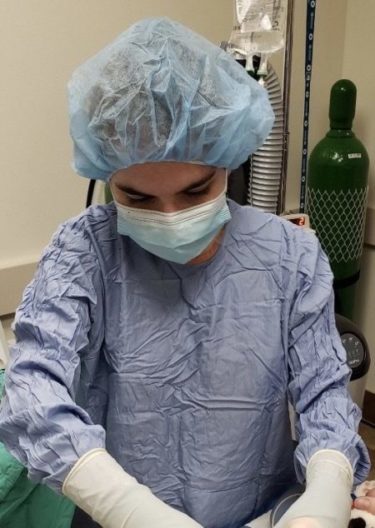This summer, I went on an adventure. Really, I went on many adventures, but one of them was completely veterinary related and I loved it a lot.
To better understand my adventure, you should know that I would like to move to the mountains when I graduate. I love the mountains and snow, and I don’t like it being summer until October.
So, this summer, I decided that I should try to figure out where I want to live when I  graduate.
graduate.
The best thing about being a veterinarian is that the entire U.S. is open to you when you graduate—everywhere needs a vet.
The worst thing about being a veterinarian is that if you have no idea where you want to live, it is hard to narrow it down—the entire country is open to you. I had narrowed it to the mountains, but there are so many mountains, so I needed to figure out more.
On July 5, I loaded up my car and started my three-day solo road trip to Idaho. Solo road trips might not be everyone’s favorite thing, but I love them.
I downloaded some books on tape and drove through areas of the U.S. that I had never been to before, like Utah and northern New Mexico. It was quite an adventure, and I am grateful that my 21-year-old car made it to Idaho. I think I worried my parents, but I was having a great time.
In Idaho, I rode with a few dairy veterinarians in the area that I was in. I had never been exposed to dairy medicine, so it was quite a new experience.
I got to see the difference in working for an operation versus having many large dairies as clients. I also had the opportunity to work with pregnant cows and got to see what the role of the veterinarian was in large-scale operations. It was a great experience that opened my eyes to the different roles of vets in different industries.
I was only in Idaho for a week, so after that week was done, I packed up my car again and drove to Bozeman, Montana, where I spent two weeks at a clinic.
 Let me tell you, Bozeman is gorgeous. I loved it there. I would wake up in the mornings, and it would be 45 degrees. To put that in perspective, it is the middle of October in Texas, and I don’t think that is has gotten into the 40s yet.
Let me tell you, Bozeman is gorgeous. I loved it there. I would wake up in the mornings, and it would be 45 degrees. To put that in perspective, it is the middle of October in Texas, and I don’t think that is has gotten into the 40s yet.
I really enjoyed the clinic in Bozeman. They were willing to teach me and give me opportunities to work with them.
I really appreciate the veterinary field as a whole because most vets are willing to teach; that means that as students, we have the unique opportunity to reinforce what we are learning in class and learn about what it will be like when we graduate.
My adventure ended with my dad flying to Bozeman and driving to Yellowstone with me. We camped and hiked and saw one of the most beautiful places that I have ever been. The bison that were on the side of the road were also great!
We stayed for three days, and I was sad when we had to leave. I hope to move somewhere that will allow more access to gorgeous outdoor scenery like that.
My adventure ended on July 31 when we got home. I drove 4,330 miles in 26 days on this trip. I had so much fun, and I am so grateful for the time that veterinary students get off during the summer, which allows us to have time to choose what we want to do, whether it is veterinary related or not.
This was my last summer off before I graduate because next summer, I will be in fourth year, when we spend an entire calendar year working through the different services in the  Small and Large Animal Hospitals.
Small and Large Animal Hospitals.
I will look back on this adventure fondly, and, thankfully, I think it helped serve the purpose of learning more about the veterinary field and about where I want to move.
























 This summer, I was lucky enough to be selected to participate in Banfield Pet Hospital’s Summer Job Program. Back in March, I was assigned to work at a clinic in Houston. The program is designed to be a mix of working as a technician and learning alongside the doctors. While I was initially concerned that the experience would be canceled due to COVID-19, everything continued as planned!
This summer, I was lucky enough to be selected to participate in Banfield Pet Hospital’s Summer Job Program. Back in March, I was assigned to work at a clinic in Houston. The program is designed to be a mix of working as a technician and learning alongside the doctors. While I was initially concerned that the experience would be canceled due to COVID-19, everything continued as planned! Not only did I perform routine physical exams, but I also got to do orthopedic and neurologic exams. I also became much more confident in interpreting diagnostic tests like fecal exams and ear cytologies. I even got to scrub in on surgeries!
Not only did I perform routine physical exams, but I also got to do orthopedic and neurologic exams. I also became much more confident in interpreting diagnostic tests like fecal exams and ear cytologies. I even got to scrub in on surgeries! graduate.
graduate. Let me tell you, Bozeman is gorgeous. I loved it there. I would wake up in the mornings, and it would be 45 degrees. To put that in perspective, it is the middle of October in Texas, and I don’t think that is has gotten into the 40s yet.
Let me tell you, Bozeman is gorgeous. I loved it there. I would wake up in the mornings, and it would be 45 degrees. To put that in perspective, it is the middle of October in Texas, and I don’t think that is has gotten into the 40s yet. Small and Large Animal Hospitals.
Small and Large Animal Hospitals.